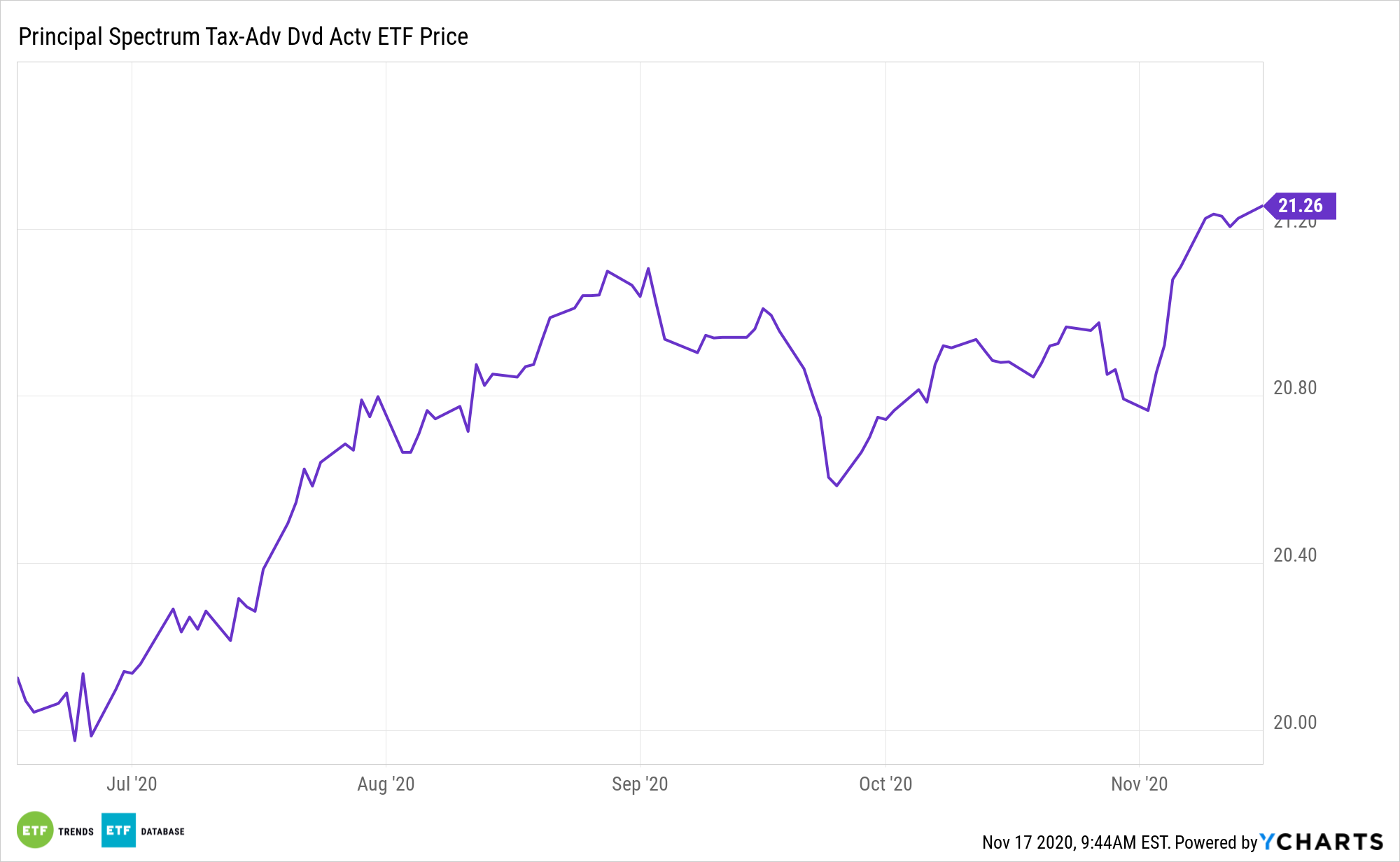In the current fixed income environment, convertible bonds offer substantial benefits. While there are exchange traded funds dedicated to the asset class, investors can gain that exposure without an all-in-one approach. Enter the Principal Spectrum Tax-Advantaged Dividend Active ETF (PQDI).
PQDI, which debuted in June, offers exposure to multiple income assets, including convertibles. The Principal ETF “seeks to provide current income. Under normal circumstances, the fund invests at least 80% of its net assets, plus any borrowings for investment purposes, in dividend-paying securities at the time of purchase,” according to Principal. “Such securities include, without limitation, preferred securities and capital securities of U.S. and non-U.S. issuers. The fund invests significantly in securities that, at the time of issuance, are eligible to pay dividends that qualify for favorable U.S. federal income tax treatment.”

Convertible bonds are a type of hybrid fixed-coupon security that allows the holder the option to swap the bond security for common or preferred stock at a specified strike price. Due to the bond’s equity option, convertible bonds typically pay less interest than traditional corporate bonds. The fund, though, does not convert its holdings into shares, but investors are exposed to the equity premium due to the way the bonds are priced.
“Convertible bonds can be an attractive option for investors looking to supplement their income needs without sacrificing growth opportunities,” writes Morningstar analyst Zachary Patzik. “These hybrid securities incorporate both bond and equity features. They have an embedded call option that provides the holder the right to convert the bond into common stock of the issuing firm at a predetermined (conversion) price. But if the stock price tumbles, the convertible’s interest and principal payments help limit losses.”
Convertible Bonds the Best of Both Worlds?
Convertible bonds are seen as a middle ground between stocks and bonds. The securities pay lower coupons than regular unsecured debt securities, but they can also make up the difference if the company’s shares continue to appreciate it. PQDI’s convertibles exposure is relevant for other reasons.
“Convertibles have held up better than large-cap equities during other challenging markets. For example, the convertible category fell by 30% on average during the great financial crisis while the large-blend equity category sank to greater depths with a 41% loss,” according to Morningstar.
In changing market environments, preferred and capital securities have historically delivered attractive risk-adjusted returns. Active management can potentially enhance returns further by selecting higher-quality investments, improving credits, and avoiding speculative risks. Investors are seeking new innovative solutions to boost after-tax income, especially as interest rates remain low. PQDI exposure to preferred securities aims to provide tax-advantaged income as U.S. investors build and distribute wealth.
For more on multi-factor strategies, visit our Multi-Factor Channel.
The opinions and forecasts expressed herein are solely those of Tom Lydon, and may not actually come to pass. Information on this site should not be used or construed as an offer to sell, a solicitation of an offer to buy, or a recommendation for any product.

